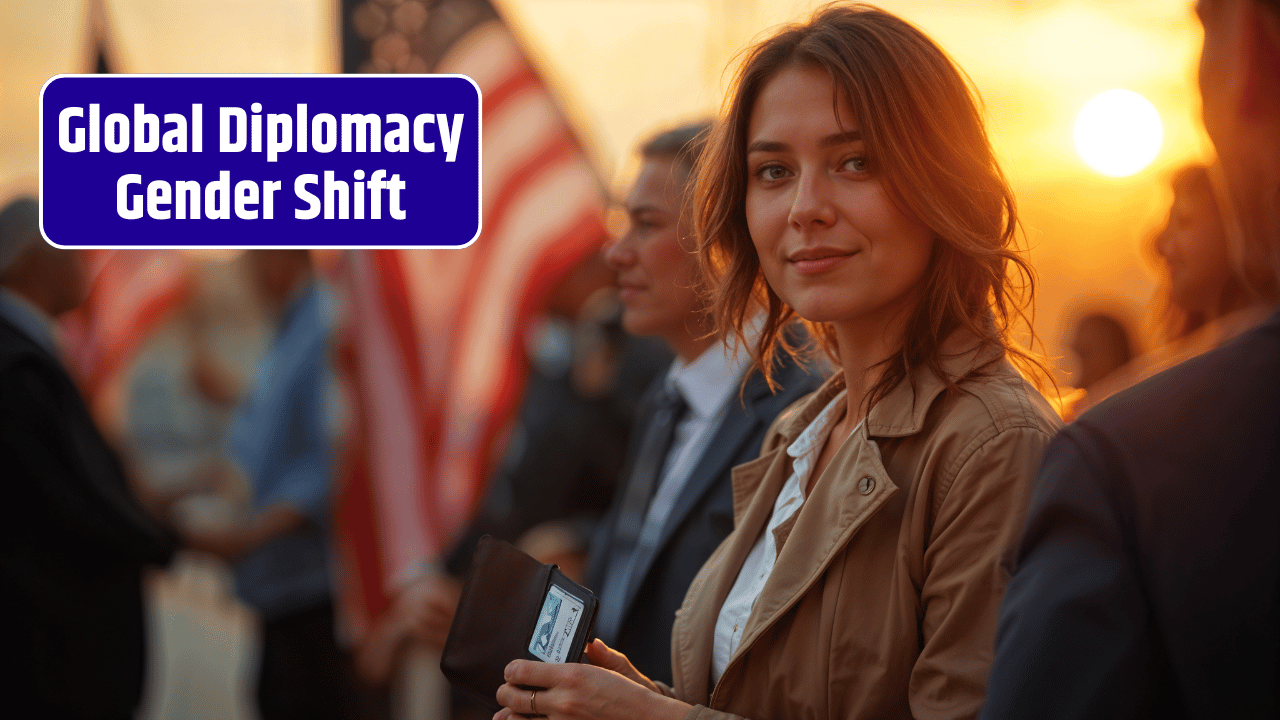It used to be that the global stage—those mahogany tables at the UN, the private halls of the G20, the tense backrooms of peace talks—were mostly a sea of dark suits, muted ties, and male voices. Women were there, but often in the minority, sometimes relegated to the sidelines. Fast forward to 2025, and that picture is shifting—fast. The quiet gender revolution in diplomacy is no longer just about token representation; it’s about women leading, shaping policy, and steering the world through crises in ways that are changing the tone and substance of international relations.
Table of Contents
The Numbers Tell the Story
For years, the statistics on female ambassadors and foreign ministers barely moved. In 1995, only 6% of the world’s foreign ministers were women. By 2020, that figure had inched up to around 20%, according to UN Women. But in 2025, the numbers are breaking past symbolic milestones: nearly one in three foreign ministers worldwide is now a woman, and women are taking top posts in historically male-dominated diplomatic corps.
Countries like Germany, Mexico, and Rwanda have implemented gender-parity laws that ripple into foreign service appointments. Even traditionally conservative foreign ministries in the Middle East and Asia are seeing female leadership emerge, often backed by internal reforms and international pressure.
| Year | % of Female Foreign Ministers | Countries with Gender-Parity Laws in Diplomacy |
|---|---|---|
| 1995 | 6% | 0 |
| 2020 | 20% | 3 |
| 2025 | 32% | 9 |
Why This Shift Matters
It’s not just about optics. Research from the Council on Foreign Relations and the UN shows that peace agreements with women at the negotiating table are 35% more likely to last 15 years or more. The inclusion of women often changes the priorities of diplomacy—issues like education, healthcare, climate adaptation, and human rights tend to get more space on the agenda.
Plus, there’s a tonal difference. Observers say negotiations led by women often lean toward consensus-building rather than brinkmanship. This doesn’t mean women avoid tough stances—look at New Zealand’s Nanaia Mahuta or the EU’s Josep Borrell’s female counterparts—but they often reframe the debate, moving away from zero-sum thinking.
The Role of Global Crises
The COVID-19 pandemic and the climate emergency both exposed the costs of short-term, power-centric diplomacy. In response, many countries have rethought their leadership pipelines, recognizing the value of diverse perspectives. The 2024 UN Climate Summit was notable not just for its ambitious targets, but for the fact that half the chief negotiators were women—an unprecedented figure.
The war in Ukraine and the shifting geopolitics in Asia have also played a part. Countries are realizing that soft power—cultural diplomacy, humanitarian aid, coalition-building—is as crucial as military deterrence. Female diplomats often excel in these areas, partly because they’ve had to navigate systems stacked against them, honing persuasive and collaborative skills along the way.
Barriers That Haven’t Disappeared
Before we get too rosy-eyed, the reality is that sexism in diplomacy is far from extinct. Women in top posts still face higher scrutiny, online abuse, and challenges balancing family demands in a career that can mean postings far from home. In some states, women still can’t even serve as ambassadors to certain countries due to outdated bilateral agreements or internal policies.
And representation at the top doesn’t automatically filter down. Entry-level positions in many foreign ministries remain skewed toward men, and the “glass cliff” problem—where women are appointed in times of crisis and then blamed if things fail—persists.
The Cultural Shift Behind the Scenes
Diplomacy isn’t just policy memos and press briefings—it’s also dinners, sideline chats, and symbolic gestures. Women in leadership are subtly reshaping these rituals. Instead of old-school power lunches, you’ll see more inclusive, informal gatherings; instead of only military parades, cultural exchanges and community dialogues are getting prime billing.
There’s also a growing network of women in diplomacy who share mentorship, resources, and strategy across borders. The “Global Women in Diplomacy Forum,” launched in 2023, has already signed up over 70 member states and runs an annual leadership accelerator.
The surge in female leadership is well-documented by the Inter-Parliamentary Union and UN Women. While progress has been significant, especially in the last five years, it’s not uniform—regions like Sub-Saharan Africa and parts of the Middle East still lag far behind, and gains can be fragile if political will shifts.
FAQs
Which country has the highest percentage of women in diplomatic leadership in 2025?
Rwanda leads with over 60% female representation in senior diplomatic roles.
Has the UN ever had a female Secretary-General?
No, despite multiple candidates over the years, the position has always been held by men as of 2025.
Do female diplomats negotiate differently from men?
Studies suggest they are more likely to prioritize consensus and long-term stability, but individual styles vary widely.
Are there formal quotas for women in diplomacy?
Yes, in some countries like Mexico and Spain, gender parity laws cover diplomatic appointments.
What’s the next frontier for gender equality in diplomacy?
Breaking into the very top posts—such as UN Secretary-General—and ensuring equal representation in conflict-zone assignments.














